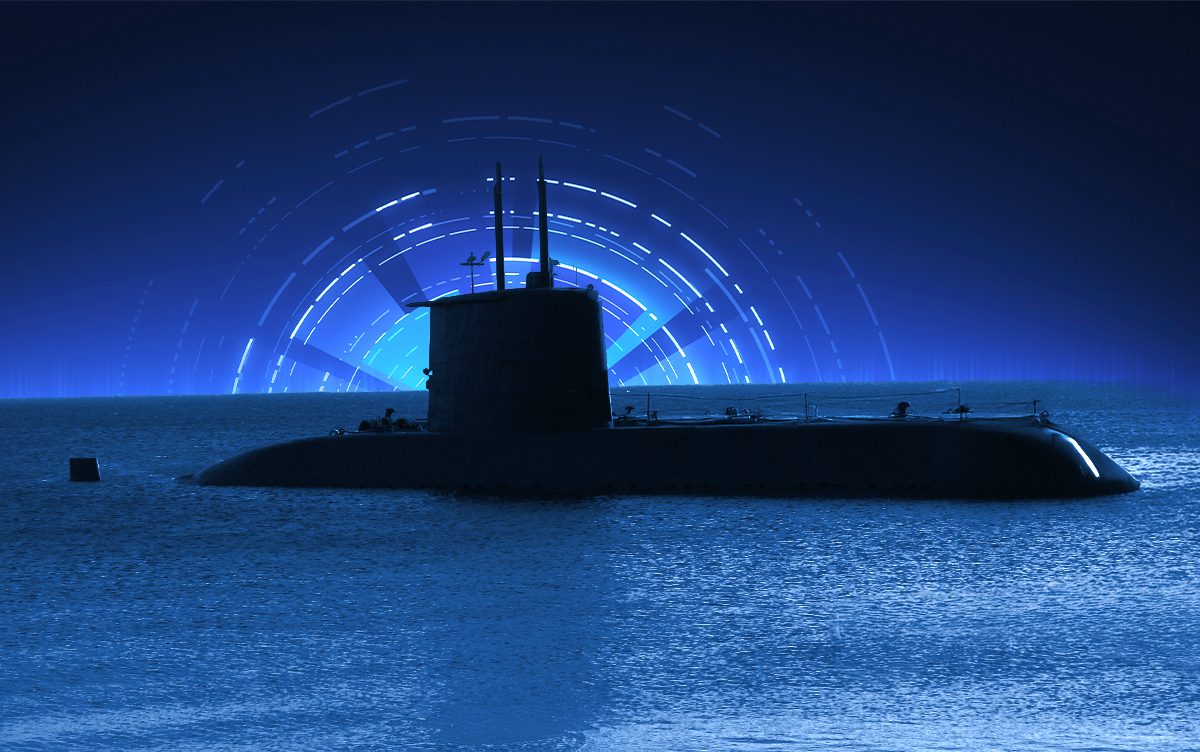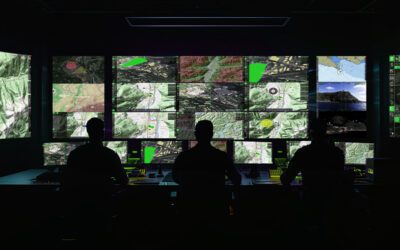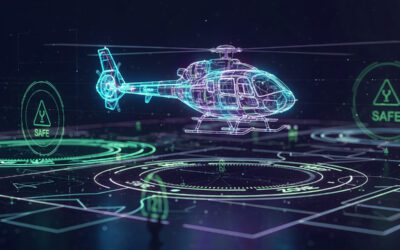The sea has always been a “cruel mistress”, and those who defend the borders or earn their living traversing the rolling waves and deep waters of the ocean are a breed apart. To support their work, maritime technology is providing new and improved methods for enhancing tactical awareness, providing more information on the topography and conditions of the oceanm and giving those who deploy such technology a distinct tactical advantage.
In this article, we’ll take a look at how maritime technology is improving situational awareness at sea. We’ll discuss why tactical awareness is so important and what maritime technology is being to improve it, examining each of the individual types of technology and how they are used to enhance tactical awareness, vessel safety, and efficiency.
Why is Tactical Awareness so important?
Tactical awareness in maritime environments is crucial for ensuring the safety, security, and operational efficiency of vessels and crews in a complex and ever-evolving environment. The global increase in marine traffic, including submersible craft and shipping, rising political tensions, and increased environmental riks mean that the ability to respond to dynamic conditions at sea is crucial.
The constantly changing conditions, which can shift from ideal to dangerous in a very short period, make developing maritime technology to enhance tactical awareness far more challenging for ocean-going vessels compared to land- or air-based ones. Without points of reference, it can be hard to locate or identify hostile forces, especially underwater.
Today’s ocean vessels are bristling with technology. From advanced sensors to augmented and virtual reality tools, electronic nautical charts, and predictive analysis, the equipment onboard a modern combat vessel, submarine, or even a cargo ship is far beyond a simple compass and sextant.
Maritime navigation systems and technology are no longer simply about “knowing where you are” at any time. They introduce new and more current information, continuously updating your situational awareness, providing military vessels with a tactical advantage and improving the safety and efficiency of cargo vessels and civilian craft.
The challenges of tactical and situational awareness at sea
Tactical and situational awareness constraints at sea can put operational procedures and even the safety of the vessel and crew at risk. We have already mentioned that conditions can change extremely quickly, with volatile weather conditions causing everything from becalming to terrifyingly powerful storms.
One of the most common issues encountered by vessels is the problem of limited visibility. Fog banks can quickly reduce visibility to almost zero, and while they can be observed, fog and reduced visibility are very hard to predict. Dehazing technology built into marine systems can significantly reduce this problem, allowing for clearer vision and a better understanding of the situation around the vessel, thereby reducing the chance of a collision, especially in busy shipping lanes.
While ship-to-shore communications have been vastly improved over the years, issues with communication ‘dead zones’, drop-outs, and failure to connect persist, especially in the very remote regions of the Pacific and the Atlantic. Adverse weather conditions can disrupt communications, and although this is now relatively rare, it can still occur.
The lack of data interoperability between systems can also lead to a breakdown in communication, particularly in real-time operations. The key to avoiding this problem is to create maritime technology that can be used with any system, regardless of the legacy’s origin. With coordination between ships and land-based control points, particularly during military operations, any complexities need to be simplified as much as possible to ensure clear communications between each party and maintain a tactical advantage in a combat situation.
For submersible vessels, the complexity of underwater terrain and the extreme pressures at depth increase the challenges. In this unique situation, what is required is clear charting, up-to-date information on topography and currents, and an enhanced overview of the surroundings through the use of navigation, charting, and overlay features tailored for submarine and maritime environments. This enables mission teams to operate with confidence and enhances the safety of both the vessel and its crew.
Technology to enhance situational awareness at sea
Today’s submarines and ships are equipped with innovative technologies that improve tactical awareness in maritime environments. These maritime systems are designed to benefit a wide range of users, including naval defence forces, the coast guard, submarine operators, divers and salvage experts, underwater researchers, and commercial shipping teams.
Advanced sensor systems
Advanced sensor systems allow vessels to perceive, interpret, and respond to dynamic conditions quickly and accurately. These systems combine data from multiple sources to create a real-time operational picture. This enhances safety, navigation, and threat detection. Sensors can range from advanced radar and sonar systems to Automatic Identification Systems, electro-optical, multispectral and infrared cameras, LiDAR, and acoustic sensors.
AI and predictive analysis
Artificial Intelligence and predictive analytics can collate fragmented data into actionable insights, improving decision-making and operational actions. Combining traditional human monitoring and static sensors with AI and predictive analysis makes it easier to identify ‘dark’ vessels, filter out erroneous data, determine the key elements required for decision-making processes, and detect patterns and anomalies, such as smuggling operations disguised as ‘fishing’ vessels in unusual locations. The ability to fuse data and overlay it also assists in predictive analysis, creating better forecasting and more accurate navigation.
Augmented and virtual reality tools
AR overlays digital information such as charts, sensor data, and hazard alerts onto the real-world view. This can include navigational assistance information such as vessel traffic in busy shipping lanes, weather reports (including hurricane warnings) and obstacle proximity alerts (such as icebergs that have drifted into shipping lanes). By overlaying the information onto the bridge monitors, the data is instantly available to help crews make faster and more accurately informed decisions.
Support for Electronic Nautical Charts (ENC) and georeferenced overlays
ENCs and georeferenced overlays enable vessels, ports, and maritime authorities to visualise, analyse, and act on spatial data. ENCs are digital vector charts that conform to standards set by the International Hydrographic Organisation (IHO) and contain detailed information on everything from coastlines, depths, and seabed features to shipping routes and restricted zones. Georeferenced overlays add dynamic, contextual data to ENC displays and can include weather data updates, environmental information on protected areas, and Admiralty updates.
AIS and NavTEX data integration
Marine AIS systems and overlays denote real-time vessel locations and movements. In extremely busy shipping lanes (such as trans-Atlantic routes, the UK’s English Channel area, and the Indian Ocean), these overlays give vital data on the movement of vessels to assist in collision avoidance and improve situational awareness. NavTEX messages include navigational warnings, meteorological forecasts, and SAR information. The messages are standardised and time-scheduled to ensure they are current and can be received by all vessels, regardless of their legacy equipment.
Augmented reality overlays on periscope video streams
In a similar way that AR works in helicopter cockpits and heads-up displays, augmented reality overlays on periscope video streams are providing navigators with far more detailed information. AR overlays can label vessels or surface features to aid in identification, submit shipping routes (allowing users to predict the target vessel’s course or if it has drifted off-course), and integrate data from alternative sources, such as infrared cameras.
Other information that can be overlaid to create a more comprehensive overview of an area includes displays with essential details such as live vessel status, route planning, and area restrictions (WSM). The use of AI to collate and deliver this information ensures it remains up to date, relevant, and accurate, enabling crews to navigate more safely and make informed decisions based on facts rather than estimations.
The future of advanced maritime technology
The introduction of autonomous watercraft, effectively the ocean-based equivalent of unmanned aerial drones, could alter the direction of maritime combat in the future. This is just one aspect of the future of advanced naval technology, which could also introduce the concept of marine digital twinning (although this will rely on stable communication technology), ‘smart’ fleets where AI and AR are the dominant elements in the operation of a vessel, and AI-powered decision ecosystems.
This step forward is already happening, with the development of FlySight’s OPENSIGHT Underwater Optronic Mast Console. This turnkey solution is a deceptively simple system with a state-of-the-art, integrated format that performs electro-optical data processing in maritime conditions. Using OPENSIGHT, video quality can be significantly improved, even in hazy or foggy conditions, and information from various sources can be overlaid to provide operators with vastly improved situational awareness at sea.
Packed with features, it represents the leading edge of maritime technology. OPENSIGHT incorporates modular elements that create a user-friendly console compatible with legacy systems. You can learn more about the UOMC by downloading the Underwater Optronic Mast Console brochure or by contacting us today to discover more about OPENSIGHT’s innovative Augmented Reality capabilities.




